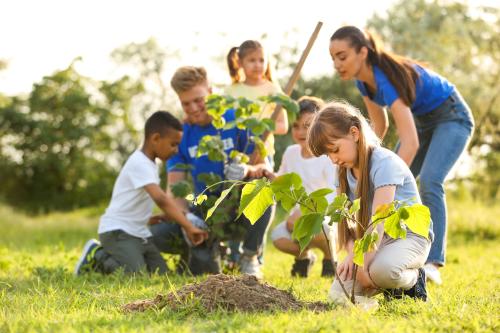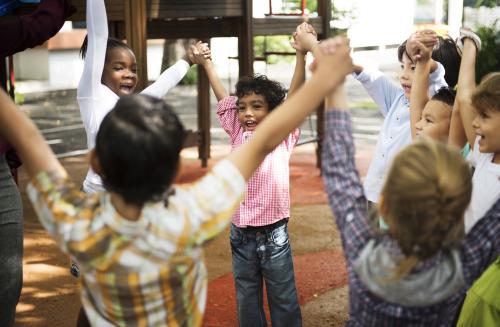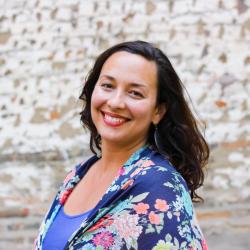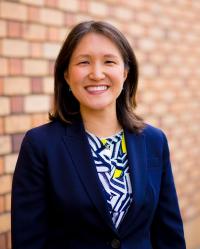This is the first post in the “Community Schools Leader Insights” series in which Brookings is sharing the experiences of people in the thick of community schools and who are making strides toward student success through the unique strengths of the local community.
Community schools emerged in the Greater Salt Lake City region of Utah in the mid-2000s beginning with the Salt Lake School District. Today, there are approximately 30 community schools throughout the Greater Salt Lake City region. Along the way, organizations like United Way of Salt Lake alongside StriveTogether, National Center for Community Schools at Children’s Aid, and the Coalition for Community Schools supported the success of subsequent schools. The United Way of Salt Lake is part of a larger national effort of United Ways around the U.S. playing a key role in catalyzing growth of community schools by providing oversight, resources, initiative management, contract management, and more, often as backbone organizations. United Way of Salt Lake aligns partners and resources toward community schools as part of an integrated roadmap to “build powerful collective impact partnerships in schools, communities, and across our region and innovate the way people, organizations, and systems work together.”
Amy Ahrens Terpstra became Chief Impact Officer for United Way of Salt Lake in order to cultivate collaborative partnerships in schools, neighborhoods, and across the region, including community schools. Terpstra says, “In the coming year, we have a plan to build more formal collaboration among community schools staff throughout our district feeling like a part of the same team, part of a learning community. Our goal is to establish a feeling of solidarity through shared purpose in the community schools strategy.”
As public funding expands, insights from leaders in places like the Greater Salt Lake region that have successfully leveraged local partnerships and family engagement can inform how schools everywhere can transform to serve young people and local communities.
Community schools meet the moment we are in—addressing COVID-19-related impacts, as well as ongoing challenges to equity in education by bringing together the best possibilities of what public education can offer. The Greater Salt Lake City Region provides strategic insights for decisionmakers interested in how community schools can transform academic outcomes through strong family engagement and sustained collaboration—in this case, collaboration benefitting from a vibrant civil society that shares accountability for outcomes while working on similar goals using data-driven decisionmaking. Although there is no single programmatic “model” for how community schools work and no one pathway for scaling the strategy, below we share four key insights from community school leaders like Ahrens that can be broadly applied everywhere to seize this critical moment in time.
1. ‘Promise partners’ build momentum toward academic results.
United Way of Salt Lake convenes a group of community, business, civic, education, government, and philanthropic partners called the Promise Partnership Regional Council (PPRC). By building on the vibrant civil society in the area, place-based partnerships and private-public collaboration serve as a strong foundation for community schools in the region. Partners share a high level of accountability for student success as they challenge themselves to “move from talk to action.”
Data from the PPRC’s 2020 “Results Matter” report show that investing in these meaningful partnerships can build momentum toward academic results. Five out of eight baseline outcomes have improved at a regional level since they began tracking the indicators in 2014. Kindergarten readiness increased by 3 percent in numeracy; eighth grade math proficiency increased by 8 percent; and high school graduation increased by 5 percent for all students. Postsecondary readiness (a composite ACT score of 18+) increased by 4 percent and postsecondary completion measures increased by 5 percent in the Utah higher education institutions in the region.
2. Family engagement strategies are critical to strong, full-service community schools.
Family engagement is foundational to successful community schools, and the Granite School District has invested staff time in family engagement strategies. Jadee Talbot, an educator and former principal who is now Granite School District’s director of Family and Community Engagement, is driven by a deep respect for the role of parents and families. Research has shown that deep collaboration between families and schools is essential to transforming and improving education systems. Talbot says, “Community Schools can’t solely be about service provision. You have to ask how the school is developing ways for families to learn, engage, and create a support system for students.”
Talbot has shaped the district’s family engagement strategy through participation in the Flamboyan Foundation’s Belonging Schools Initiative and by using Karen Mapp’s Dual Capacity-Building Framework for Family-School Partnerships. Talbot describes the process that emerged from that work: “It comes down to having meaningful, trusting relationships with families that go beyond words of welcome. We don’t just say we’re welcoming, we have to audit our practices and answer the question of how we are welcoming.”
Talbot also observed that during the pandemic, strong family engagement continued to support positive academic outcomes: “Transitioning into distance learning was hard on everyone, but many community schools had already established constant two-way communication with families so they felt welcome, tuned into their children’s basic needs, and empowered to play a role in their education. Parents in those schools were more proactive in reaching out to get help before a report card came in, which helped everyone make it through distance learning.”
3. Family engagement creates enriched learning opportunities for students and parents.
Granite School District has 106 different languages spoken within the district. Dora Ramirez, family and community outreach center coordinator, runs events and programs through the district’s community engagement center that helps parents learn how to teach their kindergarten children basics—like how to write their full name and to know their parents’ or family members’ names.
For Ramirez, the secret is steering parent participation toward a sense of shared responsibility. She describes how she engages families in this context: “We want parents to feel a part of the school. It doesn’t matter what language a parent speaks; the more involved the parents are in the school, the better their kids do.” She has noticed that when a child sees their parent and their teacher working well together, they interpret the adults to be friends and allies, and this motivates the child to learn and achieve greater results in the classroom.
In Talbot’s view, prioritizing family engagement has helped adult dispositions to shift dramatically “from an at-odds mentality to seeing both sides and recognizing the value they play.” For example, when a mother was worried about her kid who was struggling with literacy, she was able to reach out to the family engagement team. The team connected her with the student’s teacher. Together, they formed a kindergarten moms’ group that would meet and work on at-home activities to support their children’s learning. The group grew from two to six moms, and the student was soon among the top three in his class in literacy.
4. Scaling up requires bringing public funding to community schools efforts.
Over time and especially during the pandemic, Talbot has seen funds used to close family engagement gaps and create equitable opportunities in schools. Examples include funding to ensure that every young person who wants to attend summer school can do so; dual immersion programs that came about through identifying needs through data and listening to communities; home visits; and all-day kindergarten.
Terpstra believes funding must dramatically expand so community schools strategies can scale up: “We need to think a lot more about how private funders and organized intermediaries can catalyze public investment for what we know works. … We are a drop in the bucket compared to public funding.” United Way of Salt Lake has had some success in bringing public funding to community schools since 2016 by encouraging the Utah State Legislature to contribute funds to community school and cross sector partnership work. And in 2021, Utah received an infusion of $205 million in federal COVID-19 relief funds for K-12 schools.
Community schools all over the U.S. are considering how to best fund the planning, implementation, and expansion of the strategy. As public funding expands, insights from leaders in places like the Greater Salt Lake region that have successfully leveraged local partnerships and family engagement can inform how schools everywhere can transform to serve young people and local communities.
The Brookings Institution is committed to quality, independence, and impact.
We are supported by a diverse array of funders. In line with our values and policies, each Brookings publication represents the sole views of its author(s).









Commentary
Community schools in Utah’s Salt Lake City region thrive on place-based partnerships and family engagement
Community Schools Leader Insights
April 4, 2022